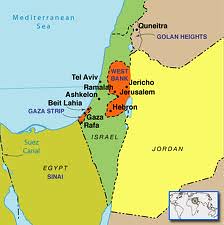
The Long and Complex History of the Israel-Palestine Conflict
Introduction
The Israel-Palestine conflict is a multifaceted and enduring dispute that has spanned over a century. Rooted in a complex history of territorial claims, identity, and sovereignty, the conflict continues to be a source of tension in the Middle East and a concern for the international community. To fully understand the ongoing conflict, it is essential to delve into its historical context.
Ancient Roots
The region that comprises modern-day Israel and Palestine has a storied history dating back thousands of years. It was once home to various ancient civilizations, including the Canaanites, Israelites, Philistines, and many others. The historical, cultural, and religious ties to the land run deep for both Israelis and Palestinians.
Ottoman Rule
For several centuries, the region fell under the rule of the Ottoman Empire. During this period, the diverse population coexisted within the empire’s administrative structure.
British Mandate
Following World War I, the League of Nations granted Britain a mandate to govern the territory. This marked a turning point in the region’s history, as it led to increased Jewish immigration, mostly driven by Zionist ideals, which aimed to establish a Jewish homeland in Palestine. Tensions between the Jewish and Arab communities grew, setting the stage for future conflict.
The United Nations Partition Plan (1947)
As British control of the mandate came to an end, the United Nations proposed a plan to partition the land into separate Jewish and Arab states, with Jerusalem under international administration. The plan was accepted by Jewish leaders but rejected by Arab leaders, leading to a wave of violence.
Israeli Declaration of Independence (1948)
On May 14, 1948, Israel declared its independence. This declaration sparked the first Arab-Israeli War, as neighboring Arab states intervened in support of Palestinian Arabs. The war resulted in a complex web of territorial changes and set the stage for future conflicts.
Armistice Agreements (1949)
Following the first Arab-Israeli War, armistice agreements were signed, creating temporary borders. The West Bank and East Jerusalem came under Jordanian control, while the Gaza Strip was administered by Egypt. The situation remained tense, with unresolved issues.
The Six-Day War (1967)
In 1967, another major conflict erupted when Israel captured the West Bank, Gaza Strip, and East Jerusalem. The war significantly altered the territorial dynamics of the conflict, with Israel occupying these territories.
Yom Kippur War (1973)
The Yom Kippur War saw further hostilities between Israel and Arab states, leading to more territorial changes but no lasting resolution.
Peace Efforts
Numerous peace initiatives, negotiations, and agreements have been attempted over the years, including the Camp David Accords, the Oslo Accords, and others. While these efforts brought temporary stability and partial agreements, they did not result in a comprehensive and lasting peace settlement.
The Current Situation
Today, the Israel-Palestine conflict remains unresolved. The status of Jerusalem, the borders of a Palestinian state, security concerns, and the rights and status of Palestinian refugees are among the contentious issues that continue to divide the parties. The situation is further complicated by the construction of Israeli settlements in the West Bank, which many view as an obstacle to peace.
Conclusion
The Israel-Palestine conflict is one of the most deeply rooted and sensitive conflicts globally, shaped by a rich historical, religious, and political backdrop. Achieving a lasting resolution remains an immense challenge, with the conflict’s complex history serving as a constant reminder of the difficulties in reaching a comprehensive peace settlement. International diplomacy and a commitment to dialogue remain crucial in the quest for a peaceful and just solution to this long-standing conflict.


